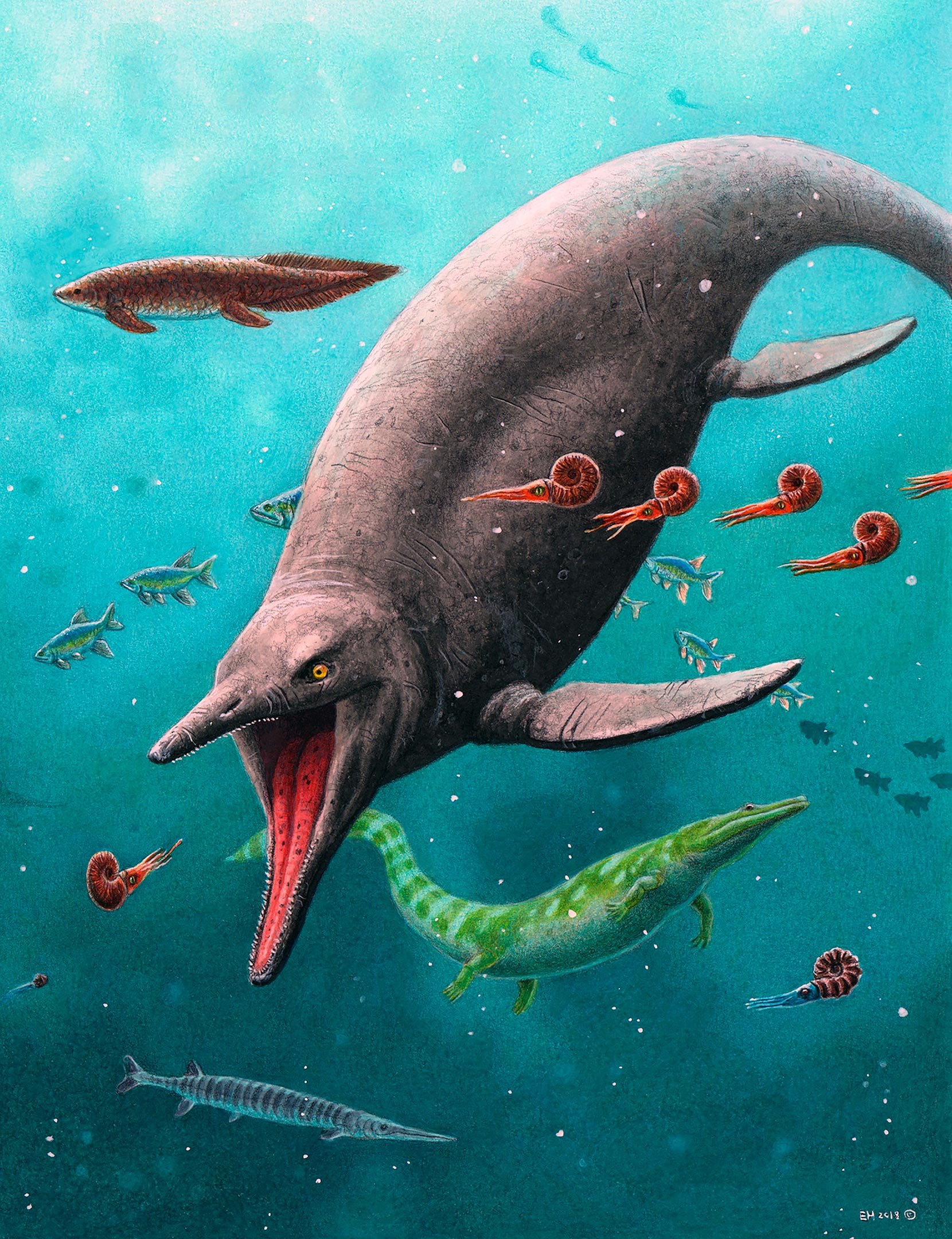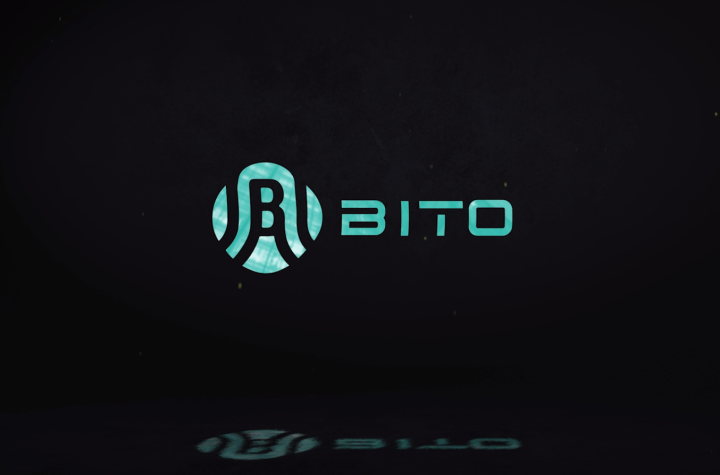
Spitsbergen에서 발견된 가장 오래된 어룡과 2억 5천만년 된 생태계의 재구성. 출처: 삽화: Esther Van Heulsen
거의 190년 동안 과학자들은 공룡 시대부터 고대 해양 파충류의 기원을 찾아왔습니다. 스웨덴과 노르웨이의 고생물학자 팀이 외딴 북극 섬 Spitsbergen에서 가장 오래된 것으로 알려진 어룡 또는 “물고기 도마뱀”의 유해를 발견했습니다.
Ichthyosaurs는 전 세계에서 화석이 발견된 멸종된 해양 파충류 그룹입니다. 그들은 넓은 바다 생활에 적응한 최초의 육상 동물 중 하나였으며 현대 고래와 유사한 “물고기 같은” 몸 모양으로 진화했습니다. Ichthyosaurs는 바다 먹이 사슬의 최상위에 있었고 공룡은 육지를 배회하며 1억 6천만 년 이상 해양 서식지를 지배했습니다.

오래된 ichthyosaur에서 척추의 내부 뼈 구조를 보여주는 단면 이미지 및 단면. 출처: Øyvind Hammer 및 Jørn Hurum
교과서에 따르면 파충류는 페름기 말 대멸종 이후 처음으로 넓은 바다로 모험을 떠났고, 이로 인해 해양 생태계가 황폐화되었고 약 2억 5,200만 년 전 공룡 시대의 서막이 열렸습니다. 이야기가 진행됨에 따라 걷는 다리를 가진 육지 파충류는 이 재앙적인 사건으로 인해 비어 있는 해양 포식자의 틈새를 이용하기 위해 얕은 해안 환경을 침범했습니다. 시간이 지남에 따라 이 초기 수륙 양용 파충류는 더 효율적인 수영 선수가 되었고 결국 팔다리를 지느러미로 변형하고 물고기와 같은 체형을 발달시키고 새끼를 낳기 시작했습니다. 따라서 그들은 알을 낳기 위해 해변으로 올 필요가 없음으로써 땅과의 마지막 결속을 끊습니다.
Spitsbergen에서 발굴된 새로운 화석은 이제 오랫동안 받아 들여진 이 이론을 수정하고 있습니다.
Spitsbergen 서부에 있는 Ice Fjord의 남쪽 해안에 있는 낚시 오두막 근처에 있는 Flower Valley는 눈 덮인 산을 가로질러 약 2억 5천만 년 전에 한때 해저에 쌓인 암석 층을 드러냅니다. 눈이 녹으면서 흘러가는 강물이 이암을 침식하여 콘크리트라고 하는 둥근 석회암 암석을 드러냈습니다. 이것들은 고대 해저에서 썩어가는 동물의 잔해 주위에 침전된 석회질 퇴적물에서 형성되어 놀라운 3차원 디테일로 보존되었습니다. 오늘날 고생물학자들은 오래 전에 죽은 바다 생물의 화석 흔적을 조사하기 위해 이러한 콘크리트 블록을 찾고 있습니다.

최초의 어룡의 유해를 생성하는 Spitsbergen의 화석 함유 암석. 신용: 벤자민 커
2014년 탐사 때 플라워밸리에서 다량의 콘크리트를 수거해 2014년 자연사박물관으로 반송[{” attribute=””>University of Oslo for future study. Research conducted with The Museum of Evolution at Uppsala University has now identified bony fish and bizarre ‘crocodile-like’ amphibian bones, together with 11 articulated tail vertebrae from an ichthyosaur. Unexpectedly, these vertebrae occurred within rocks that were supposedly too old for ichthyosaurs. Also, rather than representing the textbook example of an amphibious ichthyosaur ancestor, the vertebrae are identical to those of geologically much younger larger-bodied ichthyosaurs, and even preserve internal bone microstructure showing adaptive hallmarks of fast growth, elevated metabolism and a fully oceanic lifestyle.
Geochemical testing of the surrounding rock confirmed the age of the fossils at approximately two million years after the end-Permian mass extinction. Given the estimated timescale of oceanic reptile evolution, this pushes back the origin and early diversification of ichthyosaurs to before the beginning of the Age of Dinosaurs; thereby forcing a revision of the textbook interpretation and revealing that ichthyosaurs probably first radiated into marine environments prior to the extinction event.
Excitingly, the discovery of the oldest ichthyosaur rewrites the popular vision of Age of Dinosaurs as the emergence timeframe of major reptile lineages. It now seems that at least some groups predated this landmark interval, with fossils of their most ancient ancestors still awaiting discovery in even older rocks on Spitsbergen and elsewhere in the world.
The paper is published in the prestigious international life sciences journal Current Biology.
Reference: “Earliest Triassic ichthyosaur fossils push back oceanic reptile origins” by Benjamin P. Kear, Victoria S. Engelschiøn, Øyvind Hammer, Aubrey J. Roberts and Jørn H. Hurum, 13 March 2023, Current Biology.
DOI: 10.1016/j.cub.2022.12.053

“음악 팬. 매우 겸손한 탐험가. 분석가. 여행 괴짜. 익스트림 TV 전문가. 게이머.”









More Stories
거대한 블랙홀에서 한 쌍의 거대한 플라즈마 제트가 발사되는 것이 목격되었습니다. 블랙홀
SpaceX는 희귀하고 위험한 착륙으로 Falcon 9 로켓을 벼랑 끝으로 밀어 넣습니다.
하베스트 문(Harvest Moon)과 슈퍼문(Super Moon)이 부분 월식을 가져온다: 언제, 어떻게 시청해야 하는가 | 우주 뉴스